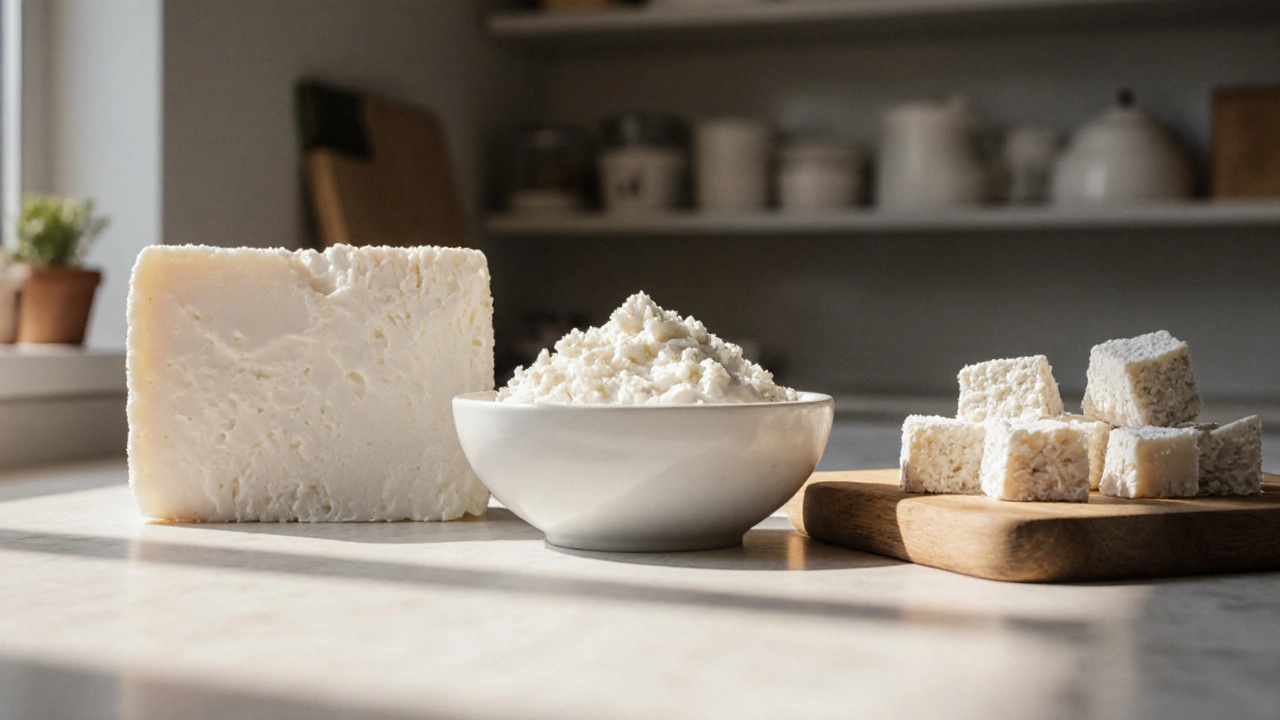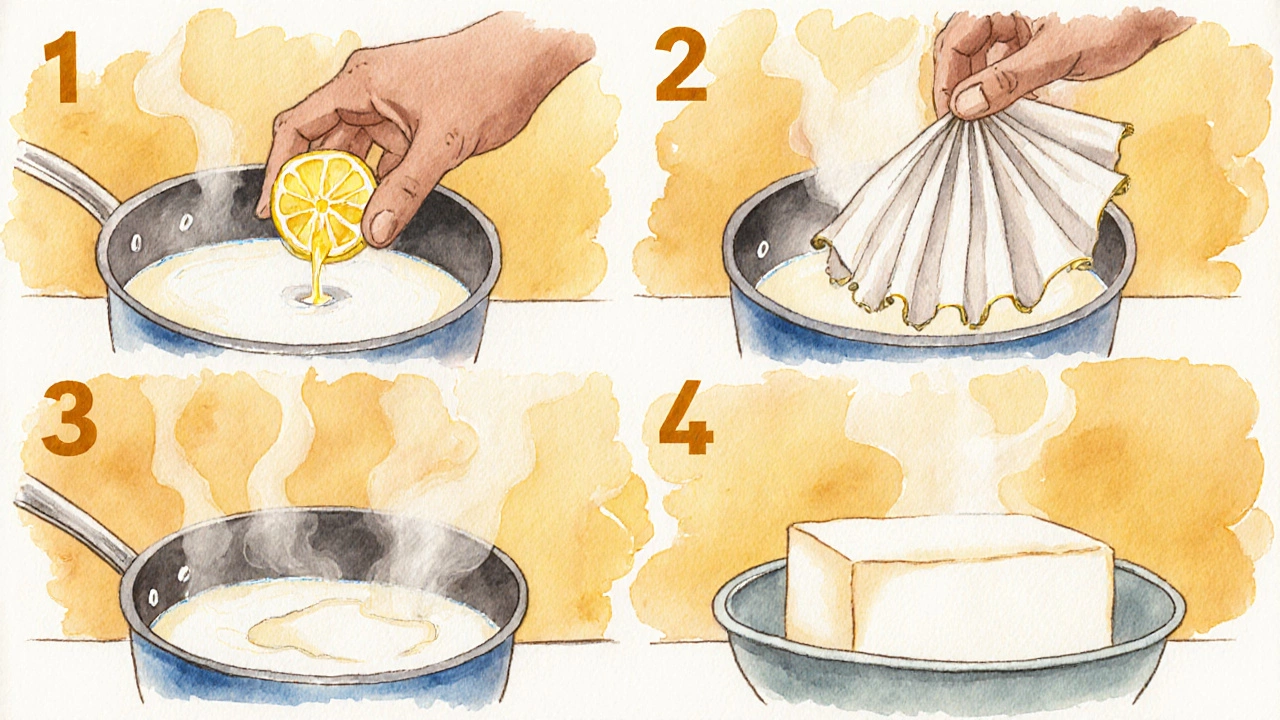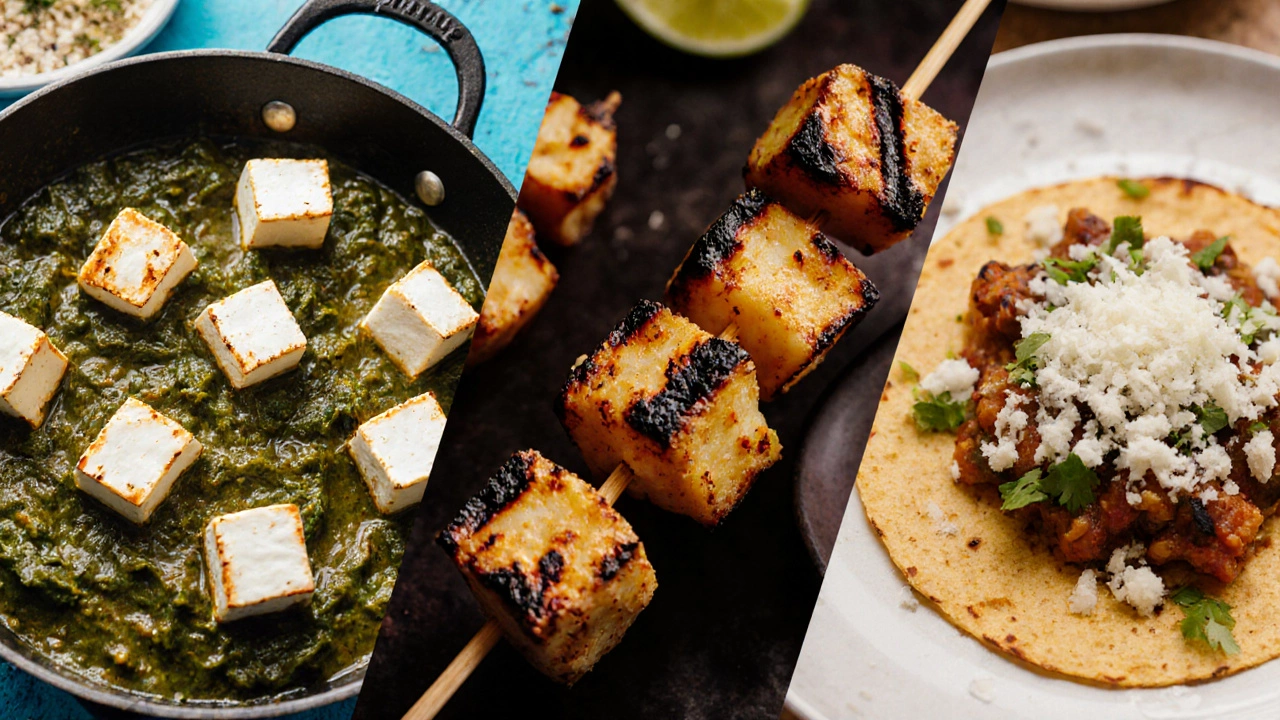English name for paneer cheese - what to call it?
 Oct, 18 2025
Oct, 18 2025
Cheese Substitute Selector
Quick Takeaways
- Paneer is a fresh, non‑aged cheese from Indian cuisine.
- In English it is most commonly referred to as cottage cheese, fresh cheese, or queso fresco.
- The main differences lie in the coagulation method and texture.
- Use paneer when you need a firm, squeaky bite; use cottage cheese for softer, creamy dishes.
- All three cheeses are vegetarian‑friendly and work well in a variety of recipes.
When you hear “paneer cheese” on a Western menu, you might wonder what to call it in plain English. The short answer is that paneer is essentially cottage cheese or “fresh cheese,” but the story behind the name has a few tasty twists.
Paneer is a fresh, non‑aged cheese made by curdling milk with an acid such as lemon juice or vinegar. It does not melt when heated, which makes it perfect for grilling, frying, or simmering in sauces. In Indian kitchens, paneer is a staple for both everyday meals and festive feasts.
How paneer is made - the basics
The process is remarkably simple, which is why homemade paneer is popular across South Asia. You start with whole Milk (usually cow’s or buffalo’s). Heat it to near boiling, then add an acid-commonly lemon juice, vinegar, or even plain yogurt. The acid causes the milk proteins to separate, forming soft Curds. The liquid left behind is whey.
Next, the curds are poured through a cheesecloth, pressed gently to remove excess whey, and allowed to set. Pressing time determines the final texture: a short press yields a softer cheese, while longer pressing creates a firmer block that holds its shape during cooking.
English equivalents - what to call paneer
There are three main English names that people use when they try to translate paneer:
- Cottage cheese - a soft, grainy cheese widely sold in Western supermarkets. It is made by adding a starter culture or an acid to milk, then draining the curds. The texture is much looser than paneer, but the base process is similar.
- Fresh cheese - a generic term for any cheese that has not been aged. This covers everything from ricotta to queso fresco, and paneer comfortably fits into this bucket.
- Queso fresco - the Mexican counterpart to paneer. It is made with a similar acid‑coagulation method, yields a mild flavor, and stays firm when heated.
While all three names are technically correct, the most accurate translation depends on the context you’re discussing.

Comparison table - paneer vs. cottage cheese vs. queso fresco
| Attribute | Paneer | Cottage cheese | Queso fresco |
|---|---|---|---|
| Milk source | Cow or buffalo whole milk | Cow whole milk (often low‑fat versions) | Cow milk, sometimes mixed with goat’s milk |
| Coagulation agent | Acid (lemon, vinegar) - no Rennet | Acid or starter culture; occasional rennet | Acid (citric acid or vinegar) |
| Texture | Firm, squeaky, holds shape when cooked | Soft, crumbling, moist | Soft‑firm, slightly crumbly |
| Flavor | Mild, milky, no sourness | Lightly tangy, dairy‑forward | Fresh, buttery, mild salt |
| Typical uses | Saag paneer, tikka, curry chunks | Salads, fruit bowls, low‑heat toppings | Tacos, enchiladas, grilled cubes |
When to use each name in a recipe
If you’re following an Indian recipe and the instruction says “add paneer,” the safest English substitute is **cottage cheese**, but keep a few things in mind:
- Texture matters. Cottage cheese is watery. Drain it thoroughly and press it lightly before adding it to a hot sauce; otherwise it will dissolve.
- Cooking method. For grilling or frying, shape the cottage cheese into a block, coat it in flour, and treat it like paneer.
- Flavor balance. Cottage cheese has a faint tang that paneer lacks. You may need to lower any added lemon or vinegar in the sauce.
When a Mexican dish calls for “queso fresco,” you can swap paneer directly because both stay firm when heated. The flavor is a bit milder, so a pinch of salt can bring the profile closer to authentic queso fresco.

Common naming confusion and quick tips
- Don’t mix paneer with ricotta. Ricotta is a whey‑based cheese, while paneer comes from whole milk curds.
- Watch the melt factor. Paneer never melts; mozzarella does. If a recipe expects a melt, paneer isn’t the right choice.
- Labeling on grocery shelves. In many Western stores, paneer is sold under the “Indian cheese” or “fresh cheese” section, often labeled simply as “Paneer - Indian Cheese.”
- Homemade shortcut. If you need a quick English equivalent, blend drained cottage cheese in a food processor for 10 seconds to mimic paneer’s firm texture.
FAQs - all the naming questions answered
Frequently Asked Questions
Is paneer the same as cottage cheese?
They share a similar acid‑coagulation process, but paneer is firmer and drier because it’s pressed longer. Cottage cheese retains more whey, making it softer and crumblier.
Can I use paneer in Western recipes that call for cheese curds?
Yes, paneer works well as a substitute for cheese curds in poutine or loaded fries, provided you cut it into bite‑size pieces. The texture will be a bit firmer, but the mild flavor blends nicely.
Why does paneer never melt in a hot curry?
Paneer’s proteins are coagulated by acid rather than rennet, so the protein network doesn’t break down under heat. That’s why it stays solid even after simmering for 20 minutes.
Is paneer vegan?
Traditional paneer is made from animal milk, so it’s not vegan. However, many home cooks make a plant‑based version using soy milk or almond milk and an acid coagulant.
How long does homemade paneer keep in the fridge?
Stored in an airtight container with a little cold water, it stays fresh for about 4‑5 days. For longer storage, freeze it in a sealed bag for up to 2 months.
So the next time you spot “paneer cheese” on a menu or in a recipe, you now know that the most natural English equivalents are cottage cheese, fresh cheese, or queso fresco-each bringing its own texture quirks and culinary heritage. Choose the name that matches the dish you’re cooking, and enjoy the buttery goodness that has made paneer a staple of Indian kitchens for centuries.
